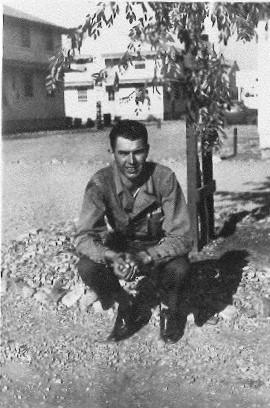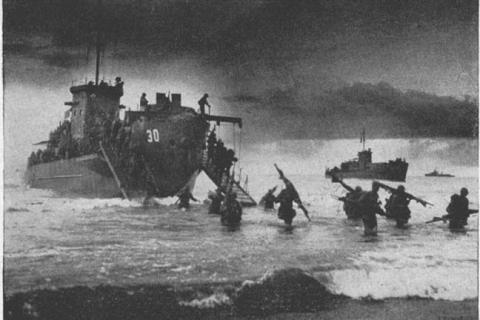James Delbert Kennedy
Pre-WSC Background
James Delbert Kennedy was born on January 30, 1923, in Salem, Oregon to James Francis and Sylvia Kennedy. He would be his parents’ only child. The family relocated to Snoqualmie, Washington during Kennedy’s childhood, where James, Sr. worked first as an engineer at a sawmill, then as an “Operator Watchman” for the Lake Washington Ship Yard. Snoqualmie lies on the ancestral lands of the Snoqualmie Tribe, a subgroup of the Coast Salish. Snoqualmie is the English pronunciation of the Salish word meaning moon. Euro-American settlers began arriving in the area in the 1850s and by the 1870s several logging companies operating in the region. By 1889, entrepreneurs sought funds and built the Seattle, Lake Shore, and Eastern railroad into the Snoqualmie Valley, making the timber market a global one.
The same year the railroad was established, the town of Snoqualmie was platted by a civil engineer, Charles Baker. Baker also constructed an underground power plant at the falls in the 1890s, resulting in electricity and jobs for residents. Snoqualmie Falls, the town, soon became a small company town. Snoqualmie voted for incorporation in 1903, and in 1917 the second all-electric lumber mill in the nation, Snoqualmie Falls Lumber Company, opened, giving the town a significant and stable employment base. While the Great Depression hit many in the agricultural and logging industries hard, Kennedy, Sr. continued to work at the mill. Nearby North Bend experienced an influx of jobs in the summer of 1935 with the building of Camp North Bend through the Civilian Conservation Corps (CCC); the camp housed hundreds of workers doing public works projects in the nearby Cascades.
Little is known about Kennedy’s childhood. He attended Snoqualmie High School and graduated in June of 1941.
WSC Experience
Kennedy attended Washington State College (WSC) from 1941 until 1943 as a General Studies major. He played on the freshmen basketball team as a center during the 1941 to 1942 season, and he was known as “Jim” Kennedy. However, The Evergreen reported he “quit turning out” during the season, reducing the team to just fourteen players. After his death, President Emeritus E.O. Holland wrote to Kennedy’s parents on May 18, 1945, advising them he knew “Delbert” as a “young man of superior ability and promise – a good college citizen.”
Wartime Service and Death
Kennedy enlisted in the United States Army as a Private on September 11, 1943, in Seattle. He was assigned to the 6th Infantry Division, the 6th Reconnaissance Troop. The 6th Infantry Division during World War II holds the unchallenged record for consecutive days of continuous combat in the Pacific Theater, at 219 days of continuous combat, on the island of Luzon in the Philippines. The 6th was reactivated on October 12, 1939, in a simple ceremony at Fort Lewis, Washington under the command of Brigadier General Clement A. Trott following the German Wehrmacht’s conquest of Poland. In May of 1941, the final unit line-up for the Division added the 6th Cavalry Reconnaissance Troop.
The 6th Division trained in the deserts of Arizona and California at the end of 1942 with the expectation they would be sent to North Africa; however, they were abruptly sent to Camp Roberts at San Luis Obispo in March 1943 in preparation for New Guinea in the southwest Pacific. Allied operations in New Guinea were considered essential to the U.S. Navy’s drive across the Central Pacific and to the U.S. Army’s liberation of the Philippine Islands from Japanese occupation. The Division set sail for the island of Oahu in Hawaii in July 1943 for jungle training, then landed in Milne Bay, New Guinea on February 2, 1944. They joined Australian forces on a palm tree plantation owned by the Palmolive Palm Oil Company. The men spent months preparing for battle, slogging through mud and jungle “infested with leaches and malaria-carrying mosquitoes”; they learned to sleep in foxholes “filled with mud and water smelling of mod and rotting vegetation.” The men worried about their limited supplies and ammunition, with some writing home to their families to request a knife be sent for protection in hand-to-hand combat.
New Guinea is the second-largest island in the world, and on its windward side, where most fighting took place during World War II, it gets upward of 300 inches of rainfall per year. The first major offensive for the 6th was at Toem at Maffin Bay in Dutch New Guinea. Kennedy participated in this campaign. Maffin Bay is perhaps more famous for what is known as the Battle of Lone Tree Hill or Wakde-Sarmi, lasting from May 17 through September 2, 1944. The battle was fought for control of a roughly eight-mile-long strip of the New Guinea coast near the island of Wakde to Maffin Bay; the Japanese were working on an airfield near Maffin Bay. The Japanese troops at Maffin Bay were an experienced fighting force, and early on Americans of the 158th Regimental Combat Team had to withdraw in and around Lone Tree Hill and two other hills. Once the 6th arrived, they found the Japanese protected by caves and “earthened, well-camouflaged fortifications that honeycombed the area…” The Battle of Lone Tree Hill took place from June 21 to June 30, 1944, with the battalions of the 1st and 20th Infantry securing the Maffin Bay area by July 12. The “Sightseeing Sixth” suffered over eight hundred casualties during the bloodiest ten days of the campaign, including over 150 killed in action.
While the terrain on New Guinea presented logistical nightmares because it “fragmented the deployment of large formations,” disease such as malaria, dengue fever, dysentery, scrub typhus, and a “host of other tropical sicknesses awaited unwary soldiers in the jungle.” An Army medic by the name of Robert Surratt recalled in 2018 what life was like in Dutch New Guinea, noting that they dealt with “120-degree heat and humidity along with snakes, mosquitoes and lizards…We slept in hammocks tied between coconut trees and we always had to be on the lookout for enemy snipers.” Surratt’s recounting of the horrific conditions in New Guinea provides an important firsthand narration of the difficulties faced by the 6th both in battle as well as the environment they inhabited.
Kennedy survived the Battle of Lone Tree Hill and Maffin Bay and landed at Sansapor on July 30-31, 1944. Sansapor was the last major American offensive in the long, bloody New Guinea campaign. Its importance lay in its availability of suitable land for airfields. Comparatively speaking, Japanese troops offered little resistance to the capture of Sansapor and two airfields were quickly constructed, with very few clashes occurring after August. However, an outbreak of scrub typhus led to 1800 cases, with nine dying of the untreatable disease. The 6th Division continued their training on Sansapor, using the jungle to train for their next mission; the invasion of the Philippines.
On New Year’s Day, 1945, the 6th Infantry Division sailed in the “largest landing force to be assembled in the Pacific,” bound for Lingayan Gulf, Luzon, Philippines. Awaiting them were 250,000 Japanese troops, experienced and battle-hardened, who were prepared to do anything to stop the Allied advance on their way to Japan. On the morning of January 9, 1945, the “greatest amphibious landing” in the Pacific Theater began with the 6th, 43rd, and 37th Infantry Divisions landing unopposed on the island of Luzon; shortly after, the 6th’s battle for the island began, to continued “unabated” for the next 219 days. While cameras recorded General Douglas MacArthur walking ashore to greet cheering Filipinos, American soldiers from the 6th would soon discover an intricate defensive network of caves and tunnels created by the Japanese on Luzon.
Pfc. Kennedy found his patrol facing artillery and small arms fire on January 12, 1945, and they were forced to pull back. He was ordered to abandon his vehicle and gain cover in a ditch. However, Kennedy saw that his comrades were in danger, so he returned to the vehicle and dismounted a machine gun, which he used to cover his patrol’s withdrawal. While doing so, he was struck by shrapnel. He lived for a week after being wounded; Kennedy died on January 19, 1945, at the age of 22.
Postwar Legacy
Kennedy posthumously received the Silver Star for his bravery along with the Purple Heart. He is buried at the Manila American Cemetery in the Philippines. He is memorialized on the WSU Veterans Memorial as well as the Snoqualmie Valley Veterans Memorial.


